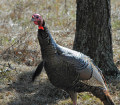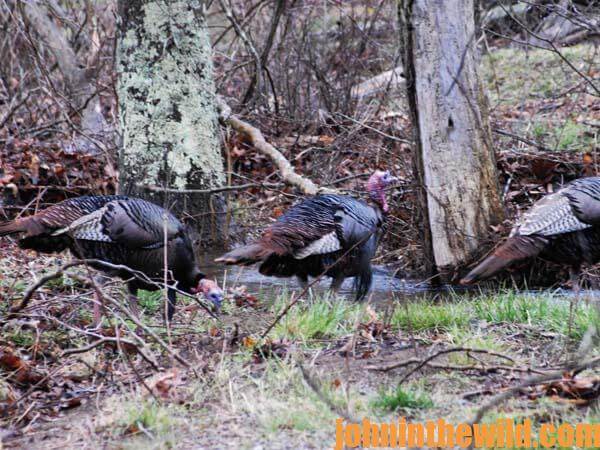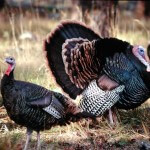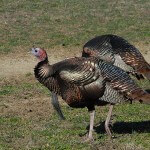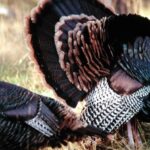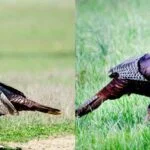John’s Note: Adapting to various situations while hunting tough toms and being flexible will pay-off in your harvesting more turkeys. Chris Kirby, the president of Quaker Boy Calls and a World Champion turkey caller, recognizes the versatility you must employ to be successful.
One spring, Chris Kirby of Orchard Park, New York, Bob Wozniak of Boston, NY and I sat in a driving rainstorm on the edge of a field before daylight in western New York State.
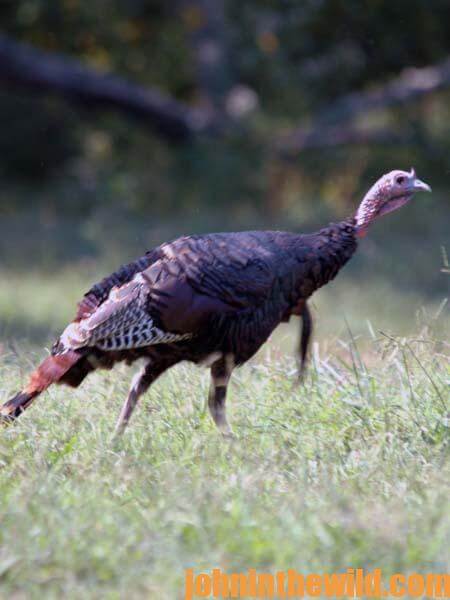 We’d spotted a gobbler leaving this field the evening before. Although the weatherman had promised rain, we thought we could go into the woods where the turkey had entered and possibly call and bag that gobbler before full daylight. However, we’d hardly sat down on our stand before Someone in the sky turned on a spigot, and the water came down in torrents. On this morning, I wore a quality rainsuit but still was miserable sitting in the rain. As the sun fought its way through the clouds, and the morning sky lightened up, about 30 yards away I spotted what looked like a big squirrel’s nest, 20-feet off the ground on an arm-sized limb. While studying the nest-looking ball, I saw it start shaking. Then before my eyes, it magically sprouted legs and a head and became a gobbler roosting on the limb.
We’d spotted a gobbler leaving this field the evening before. Although the weatherman had promised rain, we thought we could go into the woods where the turkey had entered and possibly call and bag that gobbler before full daylight. However, we’d hardly sat down on our stand before Someone in the sky turned on a spigot, and the water came down in torrents. On this morning, I wore a quality rainsuit but still was miserable sitting in the rain. As the sun fought its way through the clouds, and the morning sky lightened up, about 30 yards away I spotted what looked like a big squirrel’s nest, 20-feet off the ground on an arm-sized limb. While studying the nest-looking ball, I saw it start shaking. Then before my eyes, it magically sprouted legs and a head and became a gobbler roosting on the limb.
The big bird shook water off his drenched, dark-looking feathers, strutted and drummed on the limb. But the tom never spread his tail feathers. Kirby called to the tom. However, the turkey wouldn’t answer, although he’d drop his wings, bring all his feathers to full attention, give the PSSS-ZOOM sound of a strutting gobbler and march 2 or 3 feet up and down the limb. Later, five hens flew in below the gobbler’s tree, clucked and yelped. Kirby called more aggressively. From my vantage point, I could see the hens and the gobbler. However, I refused to shoot the ole boy off the limb. When the hens walked about 15 yards to the left of the gobbler’s tree and just over a small rise out of sight, the longbeard pitched down to them.
Kirby now gave the tom his best series of calls. But the sultan and his harem walked off into the woods and left us behind, sitting in the pouring rain. When I turned to look at Kirby behind me, he pointed to his ear, indicating he’d heard something. I watched as Kirby reached into his pocket and pulled out a Quaker Boy Triple Threat friction call with a carbon tip striker. As the rain’s force lessened somewhat, I listened to Kirby make clucks and yelps on the friction call. “I’m using the aluminum surface on the friction call, because the wind had picked up a little bit,” Kirby explained later. “The aluminum surface gave a call that would cut through the wind better than a call made on either a slate or a glass surface.”
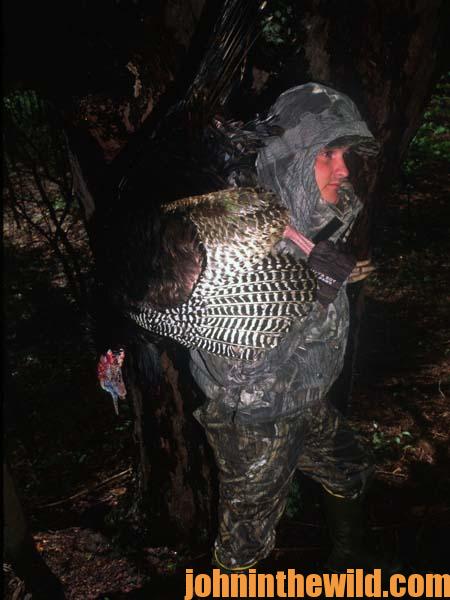 When I heard the second tom gobbling at about 60 yards, Kirby changed the tone and the pitch of his call. “As the second gobbler approached, I switched to the slate side of the call to make the bird think that a second hen had come into this area to find the gobbler,” Kirby mentioned. “I was hoping to create the illusion of two hens that had come to a spot where they normally met their gobbler and couldn’t understand why he wasn’t there. I believed this second gobbler that was coming in was a satellite gobbler that had stayed away from the rest of the flock to keep from getting beat-up by the boss gobbler. He hoped to come in to pick up these two stray hens he’d heard that hadn’t left with the original flock.” This gobbler had heard Kirby’s diaphragm call when Kirby called to the tom on the limb as well as the aluminum side and the slate side of the friction call. Kirby sounded like three different hens that all had rendezvoused in the same spot to wait on the gobbler that already had left the region with his hens.
When I heard the second tom gobbling at about 60 yards, Kirby changed the tone and the pitch of his call. “As the second gobbler approached, I switched to the slate side of the call to make the bird think that a second hen had come into this area to find the gobbler,” Kirby mentioned. “I was hoping to create the illusion of two hens that had come to a spot where they normally met their gobbler and couldn’t understand why he wasn’t there. I believed this second gobbler that was coming in was a satellite gobbler that had stayed away from the rest of the flock to keep from getting beat-up by the boss gobbler. He hoped to come in to pick up these two stray hens he’d heard that hadn’t left with the original flock.” This gobbler had heard Kirby’s diaphragm call when Kirby called to the tom on the limb as well as the aluminum side and the slate side of the friction call. Kirby sounded like three different hens that all had rendezvoused in the same spot to wait on the gobbler that already had left the region with his hens.
As I strained my neck and turned to the left, because I shoot left-handed, I could see the fire-engine-red colored head of the gobbler moving straight to me.
However, I couldn’t turn and shoot without spooking the bird – even when the longbeard stood in the open at 20 yards. He would see me move long before I could get my gun around to take the shot. Therefore, I let that turkey leave and planned to hunt him another day. When I asked Kirby why he’d changed calls, he told me that, “If you know you’ve been dealing with a boss gobbler like the one that’s been standing on the limb and has left with the hens, you always assume that there’s another gobbler in the area hoping to pick up stray hens that don’t get with the flock when they leave. By changing calls, you can sound like new hens that have come into that place late. You may pull in an interloper gobbler that has stayed well away from the flock, hoping to pick up hens that the boss gobbler has left behind.
“I always carry a friction call and two different strikers with me to make my calling more versatile. This call gives me the ability to sound like six different hens with its three surfaces to call on and two types of strikers. Many times by sounding like more than one hen, you’ll have the ability to call in a satellite gobbler, if and when you don’t take the boss gobbler in a particular area. I don’t believe we could have called in the second gobbler if I’d depended only on my diaphragm call.”
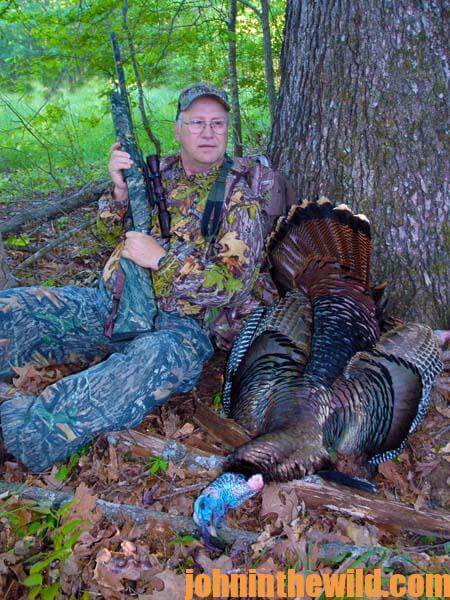 To learn more about turkey hunting from the masters, get these Kindle eBooks by John E. Phillips, including: “The Turkey Hunter’s Bible (available as an eBook or in paperback),” “PhD Gobblers: How to Hunt the Smartest Turkeys in the World,” “Turkey Hunting Tactics” and “Outdoor Life’s Complete Turkey Hunting.” Click here to get these books.
To learn more about turkey hunting from the masters, get these Kindle eBooks by John E. Phillips, including: “The Turkey Hunter’s Bible (available as an eBook or in paperback),” “PhD Gobblers: How to Hunt the Smartest Turkeys in the World,” “Turkey Hunting Tactics” and “Outdoor Life’s Complete Turkey Hunting.” Click here to get these books.

